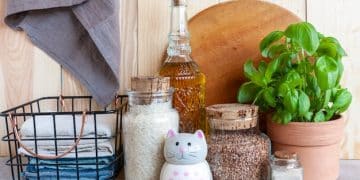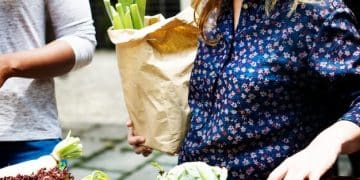Sustainable Fashion: Build an Eco-Friendly Wardrobe on a Budget
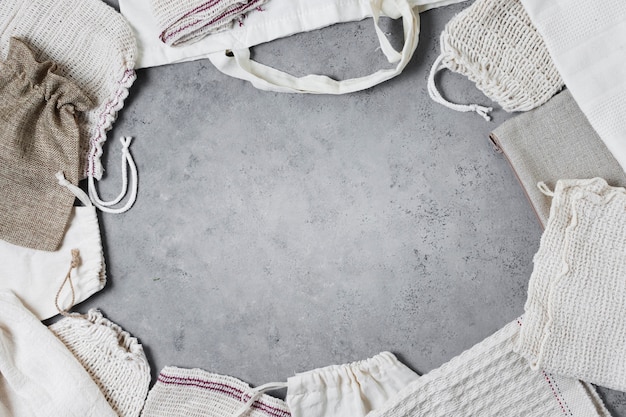
Sustainable fashion is more accessible than you think; discover 5 actionable tips to curate an eco-friendly wardrobe without breaking the bank, from thrifting to DIY projects, ensuring style and sustainability go hand in hand.
Looking to embrace sustainable fashion: 5 tips for building an eco-friendly wardrobe on a budget? It’s easier than you think, and it doesn’t require a fortune.
Understanding Sustainable Fashion
Sustainable fashion represents a conscious shift in how we consume and create clothing. It’s about minimizing environmental impact and promoting ethical practices throughout the fashion industry.
Many people assume that sustainable fashion is expensive or difficult to access. However, with a few simple strategies, it’s possible to build an eco-friendly wardrobe while staying within a reasonable budget. It involves rethinking your purchasing habits, exploring alternative options, and caring for your clothes in a way that extends their lifespan.
The Environmental Impact of Fast Fashion
Fast fashion has drastically influenced our consumption habits, leading to significant environmental concerns. The constant demand for new items results in excessive waste and pollution. Water usage, chemical dyes, and textile waste contribute to environmental degradation.
- Water pollution from textile dyeing processes
- Greenhouse gas emissions from production and transportation
- Landfill waste due to discarded clothing
Ethical Considerations
Beyond environmental concerns, the fast fashion industry often involves unethical labor practices. Workers in developing countries frequently face unsafe working conditions and are paid unfairly.
- Fair wages and safe working conditions
- Transparency in the supply chain
- Empowering artisans and local communities
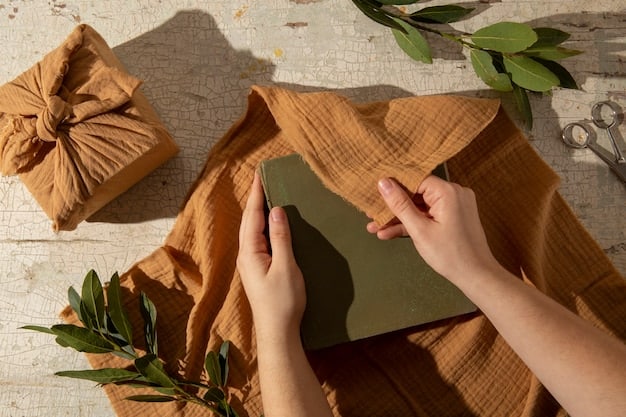
Ultimately, understanding sustainable fashion means recognizing the interconnectedness of environmental and social issues within the fashion industry. By making informed choices, consumers can drive positive change and support a more ethical and sustainable system.
Adopting sustainable fashion practices helps reduce our carbon footprint, promote fair labor standards, and contribute to a healthier environment for future generations.
Tip 1: Embrace Thrifting and Secondhand Shopping
Thrifting is one of the most effective ways to build a sustainable wardrobe on a budget. It gives pre-loved clothing a new lease on life, reducing the demand for new production.
Thrift and secondhand stores offer a wide array of clothing options at a fraction of the cost of retail prices. It’s a treasure hunt where you can find unique, high-quality pieces while supporting environmental sustainability.
Finding the Best Thrift Stores
Discovering great thrift stores can be a fun and rewarding experience. Look for local and chain thrift stores in your area. Some stores specialize in vintage or designer clothing, while others offer a more general selection.
- Check online reviews and recommendations
- Visit stores in affluent neighborhoods for higher-quality finds
- Look for specific sale days or discounts
What to Look for When Thrifting
When thrifting, pay attention to the quality and condition of the items. Check for stains, tears, or other damage. Consider the fabric and construction of the garment, as these factors determine its durability.
- Inspect seams, zippers, and buttons
- Smell the garment for any odors
- Try on items to ensure a proper fit
Remember to wash any thrifted items before wearing them. This will help remove any lingering odors or allergens, ensuring that your new-to-you clothes are fresh and clean.
Thrifting not only saves you money but also contributes to reducing textile waste and supports local charities and nonprofits.
Tip 2: Seek Out Sustainable Brands
As awareness of sustainable fashion grows, many brands are adopting eco-friendly practices. These companies are committed to reducing their environmental impact and promoting ethical labor standards.
Choosing to support sustainable brands means investing in products that are made with respect for the environment and the people involved in the production process.
What Makes a Brand Sustainable?
There are several factors to consider when assessing a brand’s sustainability. Look for companies that use eco-friendly materials, minimize waste, and promote fair labor practices.
- Use of organic cotton, recycled materials, and innovative fabrics
- Transparent supply chains and certifications
- Commitment to reducing carbon emissions and water usage
Certifications to Look For
Various certifications can help you identify sustainable brands. These certifications ensure that products meet specific environmental and social standards.
- Global Organic Textile Standard (GOTS)
- Fair Trade Certification
- OEKO-TEX Standard 100
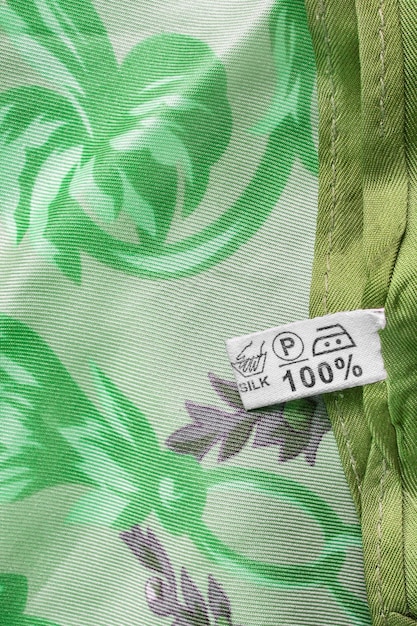
Supporting sustainable brands is an investment in a better future. While these items may sometimes be more expensive upfront, their durability and ethical production make them a worthwhile choice.
Researching brands and understanding their values will help you make informed purchasing decisions that align with your commitment to sustainability.
Tip 3: Prioritize Quality Over Quantity
One of the most effective ways to make your wardrobe more sustainable is to prioritize quality over quantity. Instead of buying many cheap, trendy items, invest in a few well-made, durable pieces that will last for years.
This approach reduces the need for frequent replacements and minimizes textile waste. By choosing high-quality garments, you’re also supporting better craftsmanship and ethical production practices.
Choosing Durable Fabrics
The fabric of a garment is a key indicator of its quality and durability. Look for materials that are known for their strength and longevity.
- Organic cotton, linen, and hemp
- Wool and cashmere
- Recycled polyester and nylon
Caring for Your Clothes
Proper care is essential for extending the lifespan of your clothes. Follow the care instructions on the garment label and avoid harsh detergents and excessive washing.
Consider using a gentle, eco-friendly laundry detergent. Hand-washing delicate items can also help prevent damage and prolong their life.
Investing in high-quality items and caring for them properly reduces the need for frequent replacements, saving you money in the long run and reducing your environmental impact.
By adopting a mindset of quality over quantity, you can build a timeless and sustainable wardrobe that reflects your values.
Tip 4: Organize a Clothing Swap
Clothing swaps are a fun and eco-friendly way to refresh your wardrobe without spending money. They involve gathering with friends, family, or community members to exchange clothes and accessories.
Organizing a clothing swap can be a great way to give unwanted items a new home and discover new treasures for yourself. It’s a social and sustainable alternative to traditional shopping.
How to Organize a Clothing Swap
Planning a successful clothing swap requires some preparation. Set a date, time, and location. Invite participants and specify any rules or guidelines. Encourage attendees to bring clean, gently used items that they no longer wear.
Provide a space for attendees to try on clothes and display items for exchange. You can also offer refreshments and music to create a festive atmosphere.
Clothing swaps promote community, reduce waste, and provide a unique opportunity to refresh your wardrobe without spending money.
It’s a fantastic way to connect with others who share your values and make a positive impact on the environment.
Tip 5: DIY and Upcycling Projects
DIY and upcycling projects provide creative ways to give new life to old or unwanted clothing items. Transforming existing garments into something new not only reduces waste but also allows you to express your unique style.
With a little creativity and some basic sewing skills, you can turn old t-shirts into tote bags, jeans into skirts, or scarves into headbands. The possibilities are endless.
Simple Upcycling Ideas
Start with simple projects that require minimal sewing skills or tools. There are countless tutorials and ideas available online to inspire your creativity.
- Turn old t-shirts into reusable shopping bags
- Transform jeans into skirts or shorts
- Create headbands or scrunchies from old scarves
Learning Basic Sewing Skills
If you’re new to sewing, consider taking a beginner’s class or watching online tutorials. Learning basic sewing skills will enable you to tackle more complex upcycling projects.
- Threading a needle and sewing a straight stitch
- Using a sewing machine
- Basic pattern making and alterations
Upcycling is a fun and rewarding way to reduce waste, express your creativity, and create unique, sustainable fashion pieces.
By embracing DIY projects, you can transform your wardrobe and contribute to a more circular economy.
| Key Point | Brief Description |
|---|---|
| ♻️ Thrifting | Buy secondhand clothes to reduce demand for new production. |
| 🌿 Sustainable Brands | Support brands with eco-friendly practices like organic materials. |
| 🧵 Quality over Quantity | Invest in durable, well-made garments for longevity. |
| 🔄 Clothing Swaps | Exchange clothes with friends and community to refresh your wardrobe. |
FAQ
▼
Sustainable fashion involves producing and consuming clothing in a way that minimizes environmental impact and promotes ethical labor practices, focusing on reducing waste and pollution.
▼
Fast fashion leads to significant environmental concerns, like water pollution and excessive waste, and often involves unethical labor practices with unsafe working conditions and unfair pay.
▼
Look for brands that use eco-friendly materials, minimize waste, and have transparent supply chains. Certifications like GOTS and Fair Trade can also help identify sustainable companies.
▼
Durable clothing materials include organic cotton, linen, hemp, wool, and recycled polyester. These fabrics withstand wear and tear, extending the lifespan of the garment and decreasing waste.
▼
Upcycling is transforming old, unwanted clothing into new items. Start with simple projects, such as turning t-shirts into tote bags, and gradually learn more advanced sewing skills for complex tasks.
Conclusion
Embracing sustainable fashion doesn’t have to be an overwhelming or expensive endeavor. By incorporating these five tips into your lifestyle—embracing thrifting, supporting sustainable brands, prioritizing quality, organizing clothing swaps, and diving into DIY projects—you can build an eco-friendly wardrobe that is both stylish and budget-conscious, contributing to a better future for our planet.

